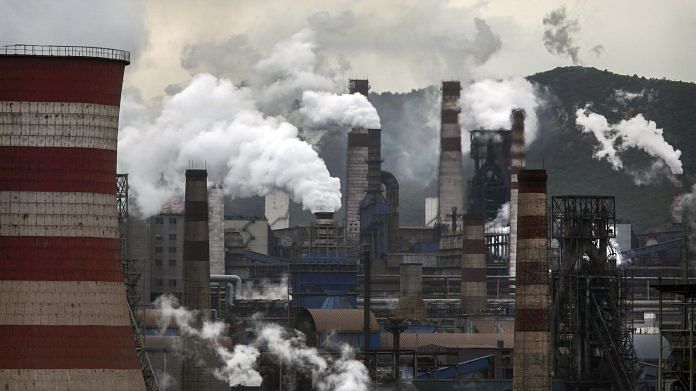New Delhi: A new United Nations report on climate change has made a grim observation — that while the latest set of climate goals put forth by countries under the Paris Agreement show increased ambition to slow down climate change, they won’t ensure that global warming is limited to 1.5 degrees Celsius above pre-industrial levels.
Adopted in 2015, the Paris Agreement is a global pact to limit global warming to “well below” 2 degrees Celsius, beyond which the effects of climate change will be catastrophic, scientists have warned. Global surface temperatures have already risen by 1.1 degrees Celsius from pre-industrial levels, leading to more frequent flooding, heatwaves, and droughts.
The new report, released by the United Nations Framework Convention on Climate Change (UNFCCC) Wednesday, is an analysis of the latest climate goals — called Nationally Determined Contributions (NDC) — under the Paris Agreement. It is a synthesis of 166 NDCs submitted by 193 countries (or “parties”) as of September 2022.
Total global greenhouse gas emissions, taking into account implementation of the latest NDCs, are projected to reach 52.4 gigatonnes of carbon dioxide (or its equivalent) by 2030, which is just 0.3 per cent lower than emissions in 2019, says the report.
According to the Intergovernmental Panel on Climate Change (IPCC), emissions need to be reduced by 43 per cent from 2019 levels in order to limit global warming to 1.5 degrees Celsius this century.
“We are still nowhere near the scale and pace of emission reductions required to put us on track towards a 1.5-degrees-Celsius world. To keep this goal alive, national governments need to strengthen their climate action plans now and implement them in the next eight years,” Simon Stiell, executive secretary of UNFCCC, said in a statement Wednesday.
The latest UN report comes ahead of the 27th United Nations Climate Change Conference, commonly referred to as COP27, where deliberations on how to implement the Paris Agreement will take place. It will be held next month in Sharm-el-Sheikh, Egypt.
Also read: 1% of global population caused 23% of growth in carbon emissions from 1990-2019, study says
‘Urgent need’ to do more
Parties to the Paris Agreement set conditional and unconditional goals in order to mitigate and adapt to the effects of climate change. The achievement of conditional goals by poorer countries often depends on support provided by richer ones, who are historically more responsible for global warming.
At COP26 last year, several countries, including large emitters like India and the US, made pledges to reduce greenhouse gas emissions.
However, the UN report says that these pledges will put the world on track to achieving 2.1 to 2.9 degrees Celsius of warming by the end of the century.
It further points out that “despite some progress since the previous version of this report”, an urgent need for either a significant increase in the level of ambition of NDCs between now and 2030, a significant overachievement of the latest NDCs, or a combination of both, is required to limit global warming to 1.5 or 2 degrees Celsius.
According to the report, if all conditional and unconditional climate goals are met, emissions from fossil fuels are likely to drop to 6.6 per cent below 2019 levels.
It further says that “in order to achieve peaking (of emissions before 2030), the conditional elements of the NDCs need to be implemented, which depends mostly on access to enhanced financial resources, technology transfer and technical cooperation, and capacity- building support; availability of market-based mechanisms; and absorptive capacity of forests and other ecosystems”.
So far, high-income countries have failed to deliver on their promise of providing climate finance that can help poorer ones achieve their climate goals.
At COP26, it came to light that high-income countries, which were supposed to have raised $100 billion in climate finance by 2020, had failed to do so and were unlikely to fulfil this promise before 2023.
According to the report, countries indicated measures for industry — for example, steel and cement, which are among the largest sources of greenhouse gas emissions — “much less frequently than for other priority areas”, such as energy, agriculture, and waste.
The latest set of climate goals also recognise “gender integration” as a means to “enhance the ambition and effectiveness” of climate actions, the report notes. “Gender integration” means taking gender into account while implementing the NDCs.
According to the IPCC, emissions need to reach net-zero by mid-century in order to keep the limit of 1.5 degrees Celsius of warming achievable. Net-zero emissions means removing as much carbon dioxide from the atmosphere as is generated.
(Edited by Nida Fatima Siddiqui)
Also read: Climate change could jeopardise energy security if renewables not doubled by 2030, says UN body



